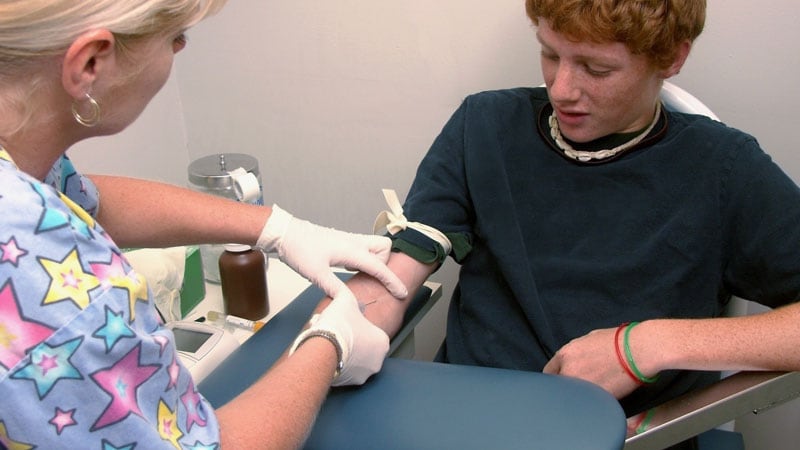betekintés - Epidemiology - # Pediatric Lipid Screening Rates and Abnormal Lipid Profiles in the United States
Alarmingly Low Rates of Lipid Screening Among US Youths, With Nearly One-Third Showing Abnormal Results
Alapfogalmak
Only 11.3% of US youths aged 9-21 years undergo lipid screening, with nearly one-third of those screened showing abnormal lipid levels, particularly among those with overweight or obesity.
Kivonat
This study examined the prevalence of lipid screening and abnormal lipid profiles among US youths aged 9-21 years using data from the IQVIA Ambulatory Electronic Medical Record database from 2018 to 2021.
The key findings are:
- Only 11.3% of the 3.2 million youths included in the study underwent documented lipid screening.
- Of those screened, 30.2% had abnormal lipid levels, with the highest prevalence (32.3%) among those aged 9-11 years.
- Compared to youths with healthy weight, the prevalence of abnormal lipid results was significantly higher among those with overweight (58% higher), moderate obesity (116% higher), and severe obesity (153% higher).
- The most common abnormalities were elevated triglycerides (25.5%), total cholesterol (11.4%), and LDL-C (9.5%).
- The authors note that this represents a missed opportunity for early intervention and guideline-recommended treatment, which includes lifestyle modification and lipid-lowering medication.
The study was limited by the use of a non-nationally representative healthcare database and potential underestimation of screening due to incomplete data. However, the findings highlight the critical need to improve lipid screening rates, especially among youth with overweight and obesity, to enable early detection and management of dyslipidemia.
Összefoglaló testreszabása
Átírás mesterséges intelligenciával
Hivatkozások generálása
Forrás fordítása
Egy másik nyelvre
Gondolattérkép létrehozása
a forrásanyagból
Forrás megtekintése
www.medscape.com
Low Rates of Pediatric Lipid Screening in the United States
Statisztikák
Only 11.3% of US youths aged 9-21 years underwent documented lipid screening.
30.2% of the screened youths had abnormal lipid levels.
The prevalence of abnormal lipid results was 58% higher among youths with overweight, 116% higher among those with moderate obesity, and 153% higher among those with severe obesity, compared to youths with healthy weight.
The most common abnormalities were elevated triglycerides (25.5%), total cholesterol (11.4%), and LDL-C (9.5%).
Idézetek
"Our study adds observational evidence that a large proportion of youths who receive screening have elevated lipid levels and might benefit from early intervention."
"This is a missed opportunity for referring children and families to guideline-recommended treatment, which includes lifestyle modification and the use of lipid-lowering medication."
Főbb Kivonatok
by Edited Manas... : www.medscape.com 07-25-2024
https://www.medscape.com/viewarticle/low-prevalence-pediatric-lipid-screening-despite-high-rates-2024a1000dr8
Mélyebb kérdések
What are the potential barriers to improving lipid screening rates among US youths, and how can they be addressed?
The low rates of pediatric lipid screening in the United States can be attributed to several barriers. One significant barrier is the lack of awareness among healthcare providers and parents regarding the importance of lipid screening in youths. There may also be a lack of consistent guidelines or recommendations for screening, leading to variability in practice. Additionally, limited access to healthcare services, especially in underserved communities, can hinder the ability to conduct regular screenings. To address these barriers, educational campaigns targeting both healthcare providers and parents can be implemented to raise awareness about the importance of lipid screening in youths. Standardized guidelines and protocols for screening can be developed to ensure consistency across healthcare settings. Increasing access to healthcare services, particularly in underserved areas, through initiatives such as mobile clinics or telehealth services, can also help improve screening rates among US youths.
How do the findings of this study compare to the prevalence of dyslipidemia and screening rates in other developed countries?
The findings of this study highlight a concerning trend of low lipid screening rates among US youths, with a high prevalence of abnormal lipid levels, especially among those with obesity. When compared to other developed countries, the US may lag behind in terms of pediatric lipid screening rates. Countries with more robust healthcare systems and preventive care programs may have higher rates of lipid screening among youths. Additionally, the prevalence of dyslipidemia in other developed countries may vary based on factors such as dietary habits, physical activity levels, and genetic predispositions. Disparities in healthcare access and utilization can also impact the prevalence of dyslipidemia and screening rates in different countries. Overall, the findings of this study underscore the need for improved lipid screening practices in the US to align with the standards observed in other developed nations.
What are the long-term health implications of the high rates of abnormal lipid profiles observed in this study, and how can early intervention strategies be implemented to mitigate these risks?
The high rates of abnormal lipid profiles observed in this study among US youths, particularly those with obesity, have significant long-term health implications. Elevated lipid levels in childhood are associated with an increased risk of developing cardiovascular diseases, such as atherosclerosis, hypertension, and coronary artery disease, later in life. Early intervention strategies are crucial to mitigate these risks and promote better long-term health outcomes. Implementing lifestyle modifications, including healthy diet choices, regular physical activity, and weight management, can help improve lipid profiles in youths. Additionally, pharmacological interventions, such as lipid-lowering medications, may be necessary in cases of severe dyslipidemia. Regular monitoring and follow-up screenings are essential to track progress and adjust interventions as needed. By addressing abnormal lipid levels early in life through comprehensive intervention strategies, the long-term health implications associated with dyslipidemia can be minimized, reducing the risk of cardiovascular diseases in adulthood.
0
